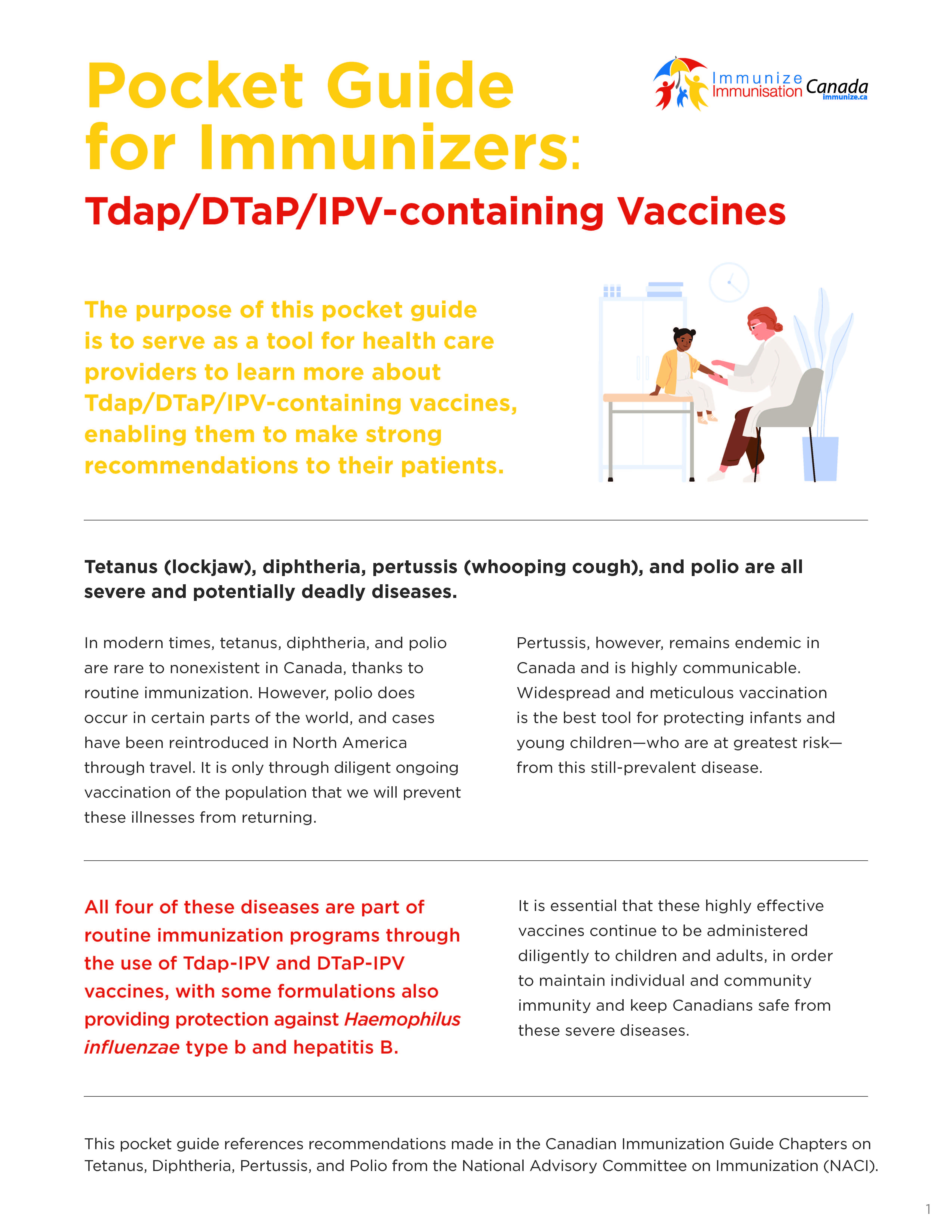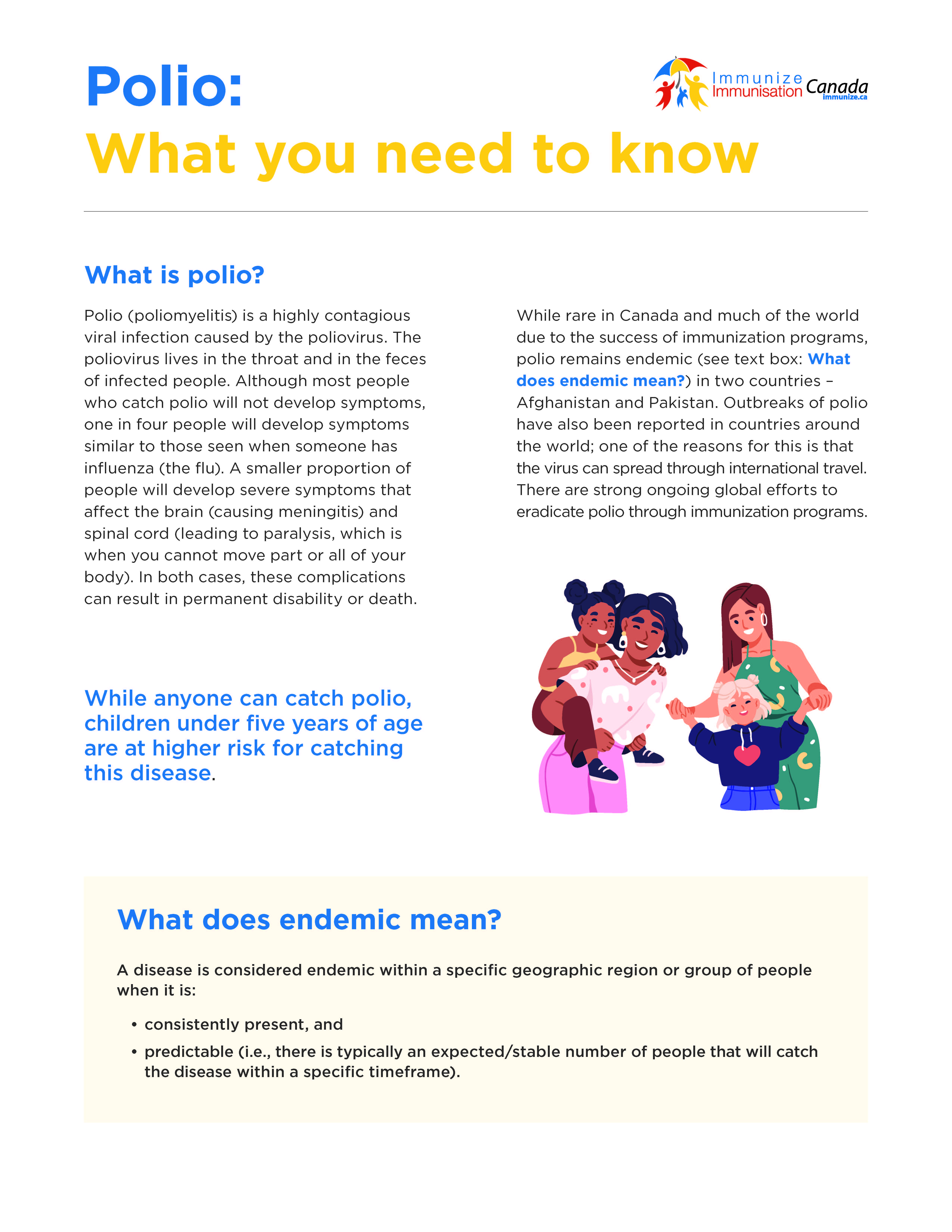Polio
Polio (poliomyelitis) is a highly contagious viral infection caused by the poliovirus. The poliovirus lives in the throat and in the feces of infected people. Although most people who catch polio will not develop symptoms, one in four people will develop symptoms similar to those seen when someone has influenza (the flu). A smaller proportion of people will develop severe symptoms that affect the brain (causing meningitis) and spinal cord (leading to paralysis, which is when you cannot move part or all of your body). In both cases, these complications can result in permanent disability or death.
Poliovirus enters the body through the mouth or nose and is spread through person-to-person contact. It is spread mainly by coming into contact with an infected person’s feces. Examples include drinking, or swimming in, contaminated water, eating food that was prepared using contaminated water, and touching fecal material and then touching your mouth (i.e., if someone does not wash their hands after using the washroom and then touches an object you later touch). Less commonly, polio can also be spread through close contact with others, such as coughing or sneezing next to someone.
While anyone can catch polio, children under five years of age are at higher risk for catching this disease.
Check out our resources on polio immunization and share with your network!
Video
Dr. Vivien Brown: Protect against polio.



